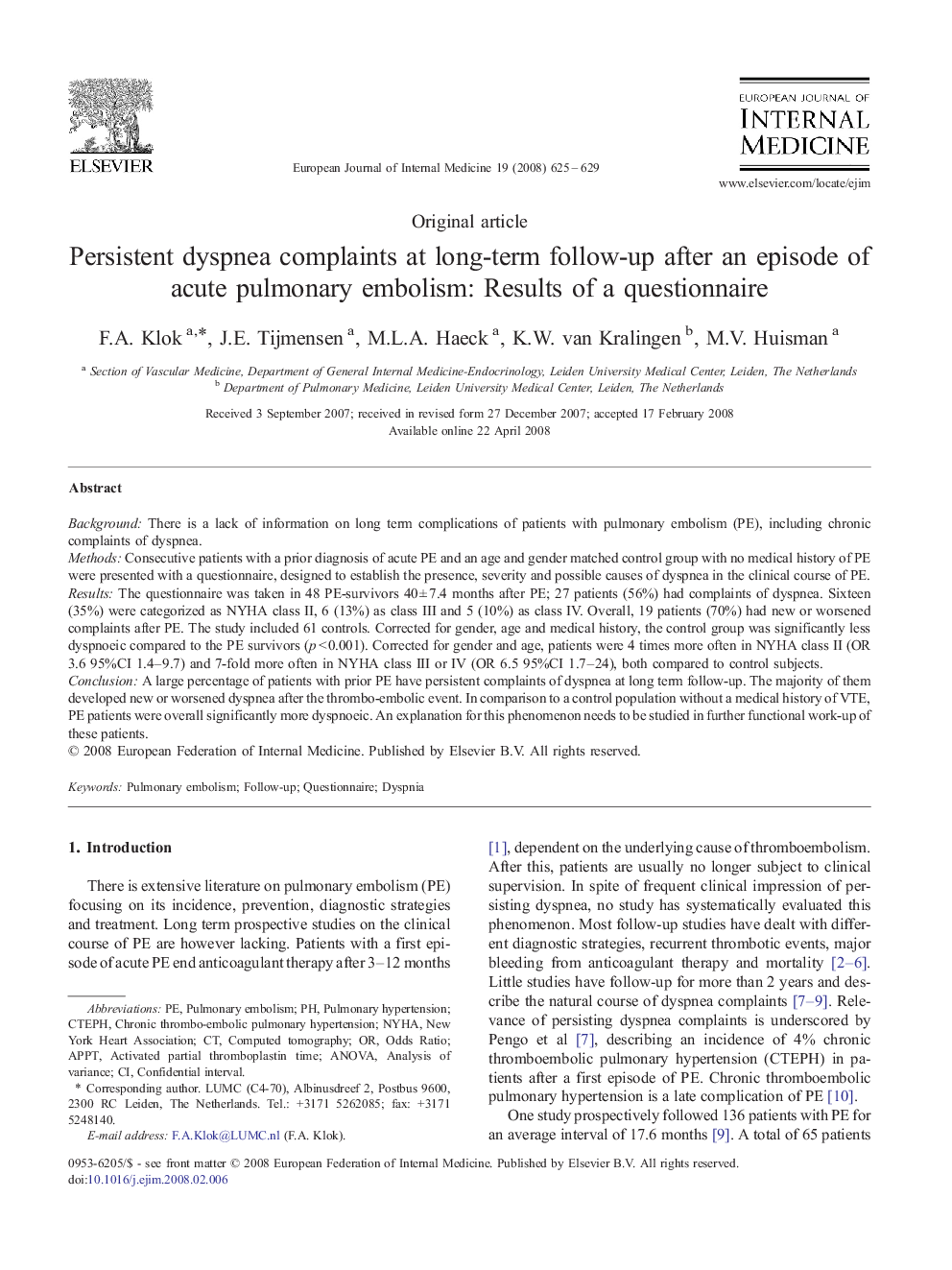| Article ID | Journal | Published Year | Pages | File Type |
|---|---|---|---|---|
| 3467825 | European Journal of Internal Medicine | 2008 | 5 Pages |
BackgroundThere is a lack of information on long term complications of patients with pulmonary embolism (PE), including chronic complaints of dyspnea.MethodsConsecutive patients with a prior diagnosis of acute PE and an age and gender matched control group with no medical history of PE were presented with a questionnaire, designed to establish the presence, severity and possible causes of dyspnea in the clinical course of PE.ResultsThe questionnaire was taken in 48 PE-survivors 40 ± 7.4 months after PE; 27 patients (56%) had complaints of dyspnea. Sixteen (35%) were categorized as NYHA class II, 6 (13%) as class III and 5 (10%) as class IV. Overall, 19 patients (70%) had new or worsened complaints after PE. The study included 61 controls. Corrected for gender, age and medical history, the control group was significantly less dyspnoeic compared to the PE survivors (p < 0.001). Corrected for gender and age, patients were 4 times more often in NYHA class II (OR 3.6 95%CI 1.4–9.7) and 7-fold more often in NYHA class III or IV (OR 6.5 95%CI 1.7–24), both compared to control subjects.ConclusionA large percentage of patients with prior PE have persistent complaints of dyspnea at long term follow-up. The majority of them developed new or worsened dyspnea after the thrombo-embolic event. In comparison to a control population without a medical history of VTE, PE patients were overall significantly more dyspnoeic. An explanation for this phenomenon needs to be studied in further functional work-up of these patients.
